Every year, Mumbai falls prey to the administration’s failure to curb flooding. Excessive concretisation, absence of smart design, lack of political will to plug leaks in the system, and now climate change take a yearly toll on the city
At least once every monsoon, the most glamorous city in the country, with all its wherewithal and riches, is brought down to its knees. And while it may get up on its feet again, the question begs to be asked: Why is the administration still blind to rain-related issues crippling the city, from flooding to building collapses to damage to public property.
A systemic failure which includes infrastructural to administrative weak spots, indecisiveness in adopting alternate modes of development, absence of smart planning and a scientific way to tackle climate change take a yearly toll on Mumbai. Experts say that shrinking open spaces and vacant land has suffocated the city, which is affecting it in unforeseen ways.
"There has been mindless development in the last two to three decades, with more floor space index being handed out to builders. This has made the city denser. We should ideally have more parks and open space than construction. And there shouldn't be any construction in low-lying areas, as this creates only nuisance, especially during rains," says V Ranganathan, former municipal commissioner.
"The city's development plan doesn't talk about low-lying areas, as it should for proper planning. The vulnerability of a location has to be considered before construction," says Ranganathan.
Mumbai is among the three coastal cities in Asia that are likely to be the worst hit due to climate change, experts say. And the crisis needs to be gauged better to keep the citizenry safe.
Subodh Jain, a former member of the Railway Board, says, "Mumbai consistently witnesses 'heavy to very heavy showers' each monsoon. A better forecasting system can give early and precise warning. There have been so many times when people have left for the office only to be caught up in rain-induced floods. It is all the more challenging to get them back home."
Citing the citywide closure announced by the BMC last week, former municipal commissioner Sharad Kale says that a better warning system can save the day. "I think it was a good decision to declare a day off early on. Otherwise more people would have suffered. You can't expect there won't be any flooding with 300 mm rains. But there is infrastructural and administrative weakness in implementing projects. This needs to be corrected. The Comptroller and Auditor General's report has criticised the BMC for its inadequate mitigation plan," says Kale.
Experts pitch for positive as well as negative actions to keep the city afloat. One of them is increasing the capacity of the storm water drains. The other is keeping them clean. "There are a lot of things floating around that choke the drains. You need to have a strict method of garbage collection and of fining people who litter drains," says Ranganathan.
On suburban railways, the pulse of the city, rising road height has turned tracks into gutters. There is sparse space to flush out the water. This is why train services come to a halt in the monsoon.
"There is bound to be disruption for six days in a year. There is no way to stop flooding of tracks as drainage facilities are inadequate. The pace of development has ensured water gets no exit. The pumps installed spew water back on the roads. The only option is to raise track height. The authorities should seriously consider an elevated corridor for the local, which has better capacity and coverage than Metro," said Jain.
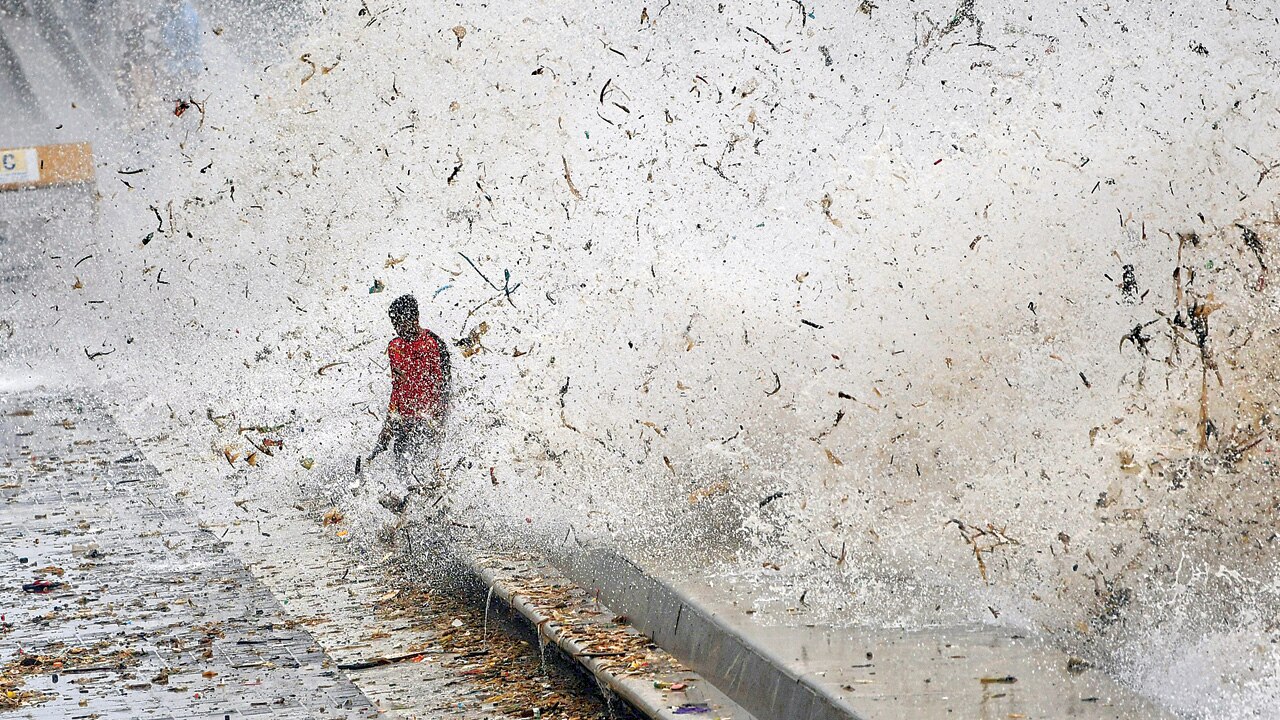
A 4.6m-high wave, speckled with garbage, strikes Marine Drive on Sunday (Aadesh Choudhari/DNA)
WHY IT FLOODS
- BMC’s disaster management unit admitted the following key deficiencies in their flood preparation guidelines:
- Capacity of drains adequate only for 25 mm/hr rainfall
- Numerous obstructions in larger drains due to siphons and other utility services
- Poor workmanship and lack of repairs when drains are punctured by utility service providers
- Gullies poorly placed and often not very effective
- Poor structural conditions
CAG CALLS OUT BMC ON ITS SHORTCOMINGS
- The Comptroller and Auditor General, in its yearly report said flooding is a chronic and recurrent problem in Mumbai from June to September, particularly when spells of intense rainfall coincide with high tide. It observes that the process of urbanisation has played a major role in aggravating the problem, causing significant alterations to hydrology, morphology, habitat and ecology of the area
- The CAG pointed out where the BMC falls short in flood preparedness despite the guidelines its disaster management unit lays down years after year. Report reveals:
- Mithi River widening and deepening running behind schedule
- Out of construction of 12 bridges, five completed, two in progress and work on five yet to commence
- Six of eight storm water pumping stations (except Mogra nullah and Mahul creek) installed; other two couldn’t be completed due to non-availability of land
 4.750 km – Target for improving Dahisar river; work completed up to 4.150 km at
4.750 km – Target for improving Dahisar river; work completed up to 4.150 km at - a cost of Rs 70.71 crore
- 21.588 km – Length of widening and deepening work to be done on Mithi River; only 15.849 km completed
SPEAK UP
Is Mumbai resigned to its fate of annual flooding?
As civic claims of rain preparedness lie exposed, Mumbaikars point to the authorities’ lack of will
I don’t think BMC or politicians have any will to help the people. The BRIMSTOWAD project won’t take 10 years to finish if they plan well. Engineers should get the project done in 3-4 years. Why is the list of flood-prone spots increasing, despite more de-watering pumps?
—Nikhil Desai, mechanical engineer (retd), King’s Circle
Mumbaikars are resigned to the fact that Mumbai will flood every year. They don’t question the corporation or raise their voice against poor planning. And authorities bank on things getting back to normal. We should hold the authorities accountable and get the work done before things get worse.
—Satyam Jadhav, Worli resident
The government is solely responsible for the floods that Mumbai witnesses every year. They are destroying natural resources and cutting trees indiscriminately in the name of development. We need places like Aarey forest, SGNP national park and other green spaces that help soak up rainwater.
—Pallavi Mangaonkar, airport ground staff, Malad
Mumbai’s floods are man-made, with ill-maintained drains, plastic bags choking sewers and open spaces shrinking. Climate change is also contributing to the flooding on roads. Cities need a proper system of garbage collection, sewage disposal and regular cleaning of drains.
—Shamal Raut, media student, Prabhadevi
![submenu-img]() Verantes Living Awarded as India’s No.1 Stainless Steel Modular Kitchen Brand
Verantes Living Awarded as India’s No.1 Stainless Steel Modular Kitchen Brand![submenu-img]() Narayana Murthy’s Infosys set to invest Rs 170000000 in this startup
Narayana Murthy’s Infosys set to invest Rs 170000000 in this startup![submenu-img]() 'Towards reducing pollution..': Delhi govt approves replacement, induction of electric vehicles in 'Gramin Sewa'
'Towards reducing pollution..': Delhi govt approves replacement, induction of electric vehicles in 'Gramin Sewa'![submenu-img]() Discover Stainless France, the Leading Supplier of Cobalt Chrome
Discover Stainless France, the Leading Supplier of Cobalt Chrome![submenu-img]() Kritika Kamra says men should take responsibility for fighting sexism: 'There's a thin line between...'
Kritika Kamra says men should take responsibility for fighting sexism: 'There's a thin line between...'![submenu-img]() हाईकोर्ट के जज ने मुस्लिम इलाके को बताया 'मिनी पाकिस्तान', सुप्रीम कोर्ट ने लगाई कड़ी फटकार, जानें पूरी बात
हाईकोर्ट के जज ने मुस्लिम इलाके को बताया 'मिनी पाकिस्तान', सुप्रीम कोर्ट ने लगाई कड़ी फटकार, जानें पूरी बात![submenu-img]() SC का यूट्यूब चैनल हुआ हैक, चलने लगा अमेरिकी क्रिप्टोकरेंसी का ऐड, कोर्ट ने NIC से मांगी मदद
SC का यूट्यूब चैनल हुआ हैक, चलने लगा अमेरिकी क्रिप्टोकरेंसी का ऐड, कोर्ट ने NIC से मांगी मदद![submenu-img]() Astronaut sunita williams ने अंतरिक्ष में मनाया बर्थडे, पढ़ाई और स्पेस स्टेशन की मरम्मत कर खास बनाया दिन
Astronaut sunita williams ने अंतरिक्ष में मनाया बर्थडे, पढ़ाई और स्पेस स्टेशन की मरम्मत कर खास बनाया दिन![submenu-img]() पाकिस्तानी सेना पर दक्षिणी वजीरिस्तान में बड़ा हमला, 6 जवानों की मौत, कई जख्मी
पाकिस्तानी सेना पर दक्षिणी वजीरिस्तान में बड़ा हमला, 6 जवानों की मौत, कई जख्मी![submenu-img]() RITES shares: रेलवे PSU के शेयर में आज 48% की गिरावट क्यों देखी जा रही है, समझें पूरा मामला
RITES shares: रेलवे PSU के शेयर में आज 48% की गिरावट क्यों देखी जा रही है, समझें पूरा मामला![submenu-img]() Ford to return to India after 2 years with reopening of....
Ford to return to India after 2 years with reopening of....![submenu-img]() Maruti Suzuki launches new Swift CNG, check price, mileage, other features
Maruti Suzuki launches new Swift CNG, check price, mileage, other features![submenu-img]() ‘30 LPA, 3BHK, no in-laws’: Woman earning Rs 1.32 lakh salary lists demands for future husband, netizens say...
‘30 LPA, 3BHK, no in-laws’: Woman earning Rs 1.32 lakh salary lists demands for future husband, netizens say...![submenu-img]() In a big EV push, Centre launches Rs 10900 crore PM E-Drive scheme to replace…
In a big EV push, Centre launches Rs 10900 crore PM E-Drive scheme to replace…![submenu-img]() World’s longest car has helipad, swimming pool, mini-golf course, can seat over…; it cost…
World’s longest car has helipad, swimming pool, mini-golf course, can seat over…; it cost…![submenu-img]() Meet IPS officer who has resigned after serving for 18 yrs due to...
Meet IPS officer who has resigned after serving for 18 yrs due to...![submenu-img]() Meet Indian man, who got hired whopping Rs 12000000 crore salary job, not from IIT, IIM he is...
Meet Indian man, who got hired whopping Rs 12000000 crore salary job, not from IIT, IIM he is...![submenu-img]() Meet woman who left medical career for UPSC exam , became IPS with AIR 165 then left job due to...
Meet woman who left medical career for UPSC exam , became IPS with AIR 165 then left job due to...![submenu-img]() Meet man, who left NDA due to depression, then cracked UPSC exam to become IAS officer, his AIR was...
Meet man, who left NDA due to depression, then cracked UPSC exam to become IAS officer, his AIR was...![submenu-img]() Meet youngest CEO of India, who created first app at 9, began his own company at 13, now he is…
Meet youngest CEO of India, who created first app at 9, began his own company at 13, now he is…![submenu-img]() Congress President Kharge Slams & Opposes 'One Nation, One Election' Proposal, Calls It Impractical
Congress President Kharge Slams & Opposes 'One Nation, One Election' Proposal, Calls It Impractical![submenu-img]() Why 'One Nation One Election' Is important? Ashwini Vaishnaw Explains After It Gets Cabinet Approval
Why 'One Nation One Election' Is important? Ashwini Vaishnaw Explains After It Gets Cabinet Approval![submenu-img]() Jammu Kashmir Assembly Election 2024 Phase 1 Highlights: What Happened In First phase In J&K Polls?
Jammu Kashmir Assembly Election 2024 Phase 1 Highlights: What Happened In First phase In J&K Polls?![submenu-img]() One Nation One Election: Centre Clears Proposal, Bill To Be Introduced In Winter Session | Modi 3.0
One Nation One Election: Centre Clears Proposal, Bill To Be Introduced In Winter Session | Modi 3.0![submenu-img]() Haryana Elections 2024: Is BJP Set To Lose In Haryana? Anti-Incumbency And Other Factors Analysed
Haryana Elections 2024: Is BJP Set To Lose In Haryana? Anti-Incumbency And Other Factors Analysed![submenu-img]() Verantes Living Awarded as India’s No.1 Stainless Steel Modular Kitchen Brand
Verantes Living Awarded as India’s No.1 Stainless Steel Modular Kitchen Brand![submenu-img]() Narayana Murthy’s Infosys set to invest Rs 170000000 in this startup
Narayana Murthy’s Infosys set to invest Rs 170000000 in this startup![submenu-img]() Discover Stainless France, the Leading Supplier of Cobalt Chrome
Discover Stainless France, the Leading Supplier of Cobalt Chrome![submenu-img]() ITR filing: Haven’t received your income tax refund yet? Here’s what you should do
ITR filing: Haven’t received your income tax refund yet? Here’s what you should do![submenu-img]() Meet ‘delivery boy’ who beats Mukesh Ambani in world’s billionaire list, his net worth is…
Meet ‘delivery boy’ who beats Mukesh Ambani in world’s billionaire list, his net worth is…![submenu-img]() In pics: Saiyami Kher conquers Ironman triathlon in Germany, swims, cycles, runs to complete endurance races
In pics: Saiyami Kher conquers Ironman triathlon in Germany, swims, cycles, runs to complete endurance races![submenu-img]() Meet IAS officer, who cracked in UPSC exam along with full-time job, her AIR was...
Meet IAS officer, who cracked in UPSC exam along with full-time job, her AIR was...![submenu-img]() In pics | India vs Bangladesh 1st Test, Day 1
In pics | India vs Bangladesh 1st Test, Day 1![submenu-img]() From Mechuka to Hayuliang village: Explore lesser-known destinations of Arunachal Pradesh
From Mechuka to Hayuliang village: Explore lesser-known destinations of Arunachal Pradesh![submenu-img]() From Simlipal National Park to Mahendragiri: Top 6 hidden gems to discover in Odisha
From Simlipal National Park to Mahendragiri: Top 6 hidden gems to discover in Odisha![submenu-img]() 'Towards reducing pollution..': Delhi govt approves replacement, induction of electric vehicles in 'Gramin Sewa'
'Towards reducing pollution..': Delhi govt approves replacement, induction of electric vehicles in 'Gramin Sewa'![submenu-img]() More trouble for ex-RG Kar principal Sandip Ghosh, Bengal medical body now...
More trouble for ex-RG Kar principal Sandip Ghosh, Bengal medical body now...![submenu-img]() Tirupati Laddu row: Lab report confirms prasada contains beef fat, fish oil
Tirupati Laddu row: Lab report confirms prasada contains beef fat, fish oil![submenu-img]() Delhi: Water supply to be shut down in capital for 12 hours tomorrow due to…; check list of affected areas
Delhi: Water supply to be shut down in capital for 12 hours tomorrow due to…; check list of affected areas![submenu-img]() FATF says India faces severe 'terrorist financing threats' from...
FATF says India faces severe 'terrorist financing threats' from...


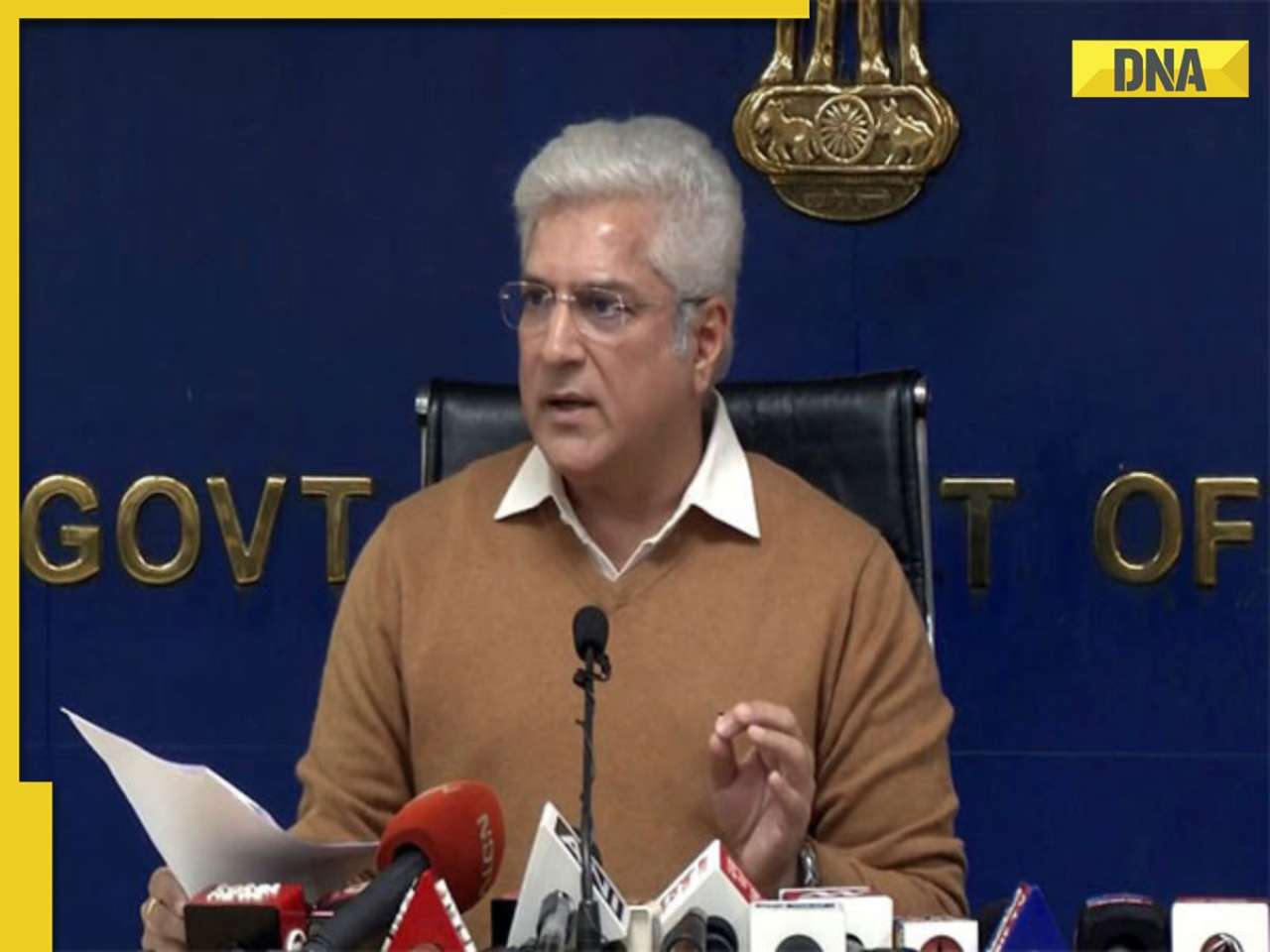








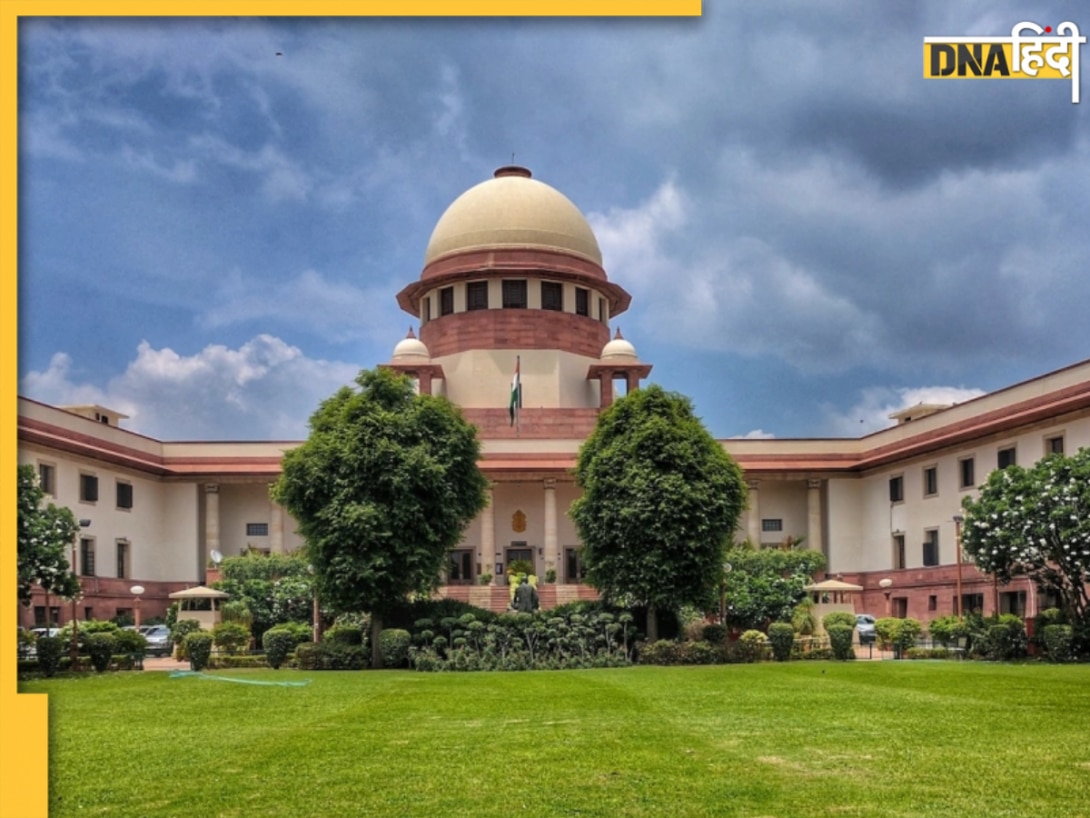













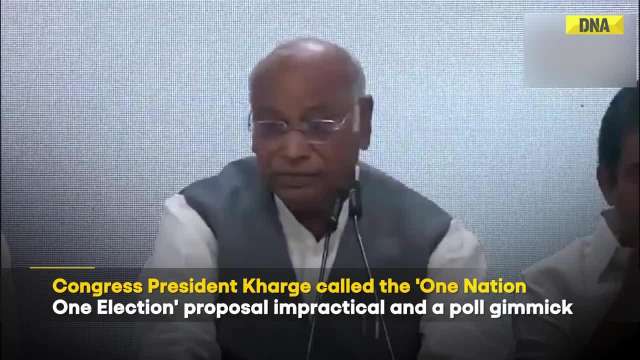
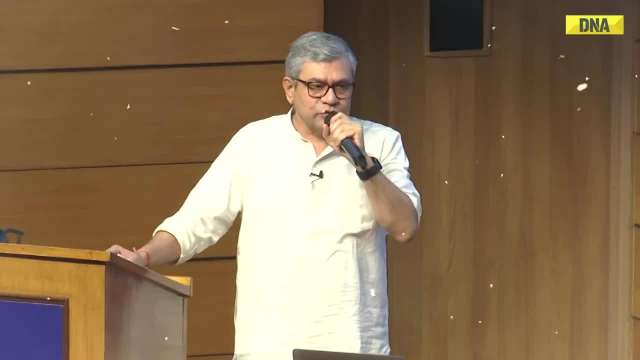










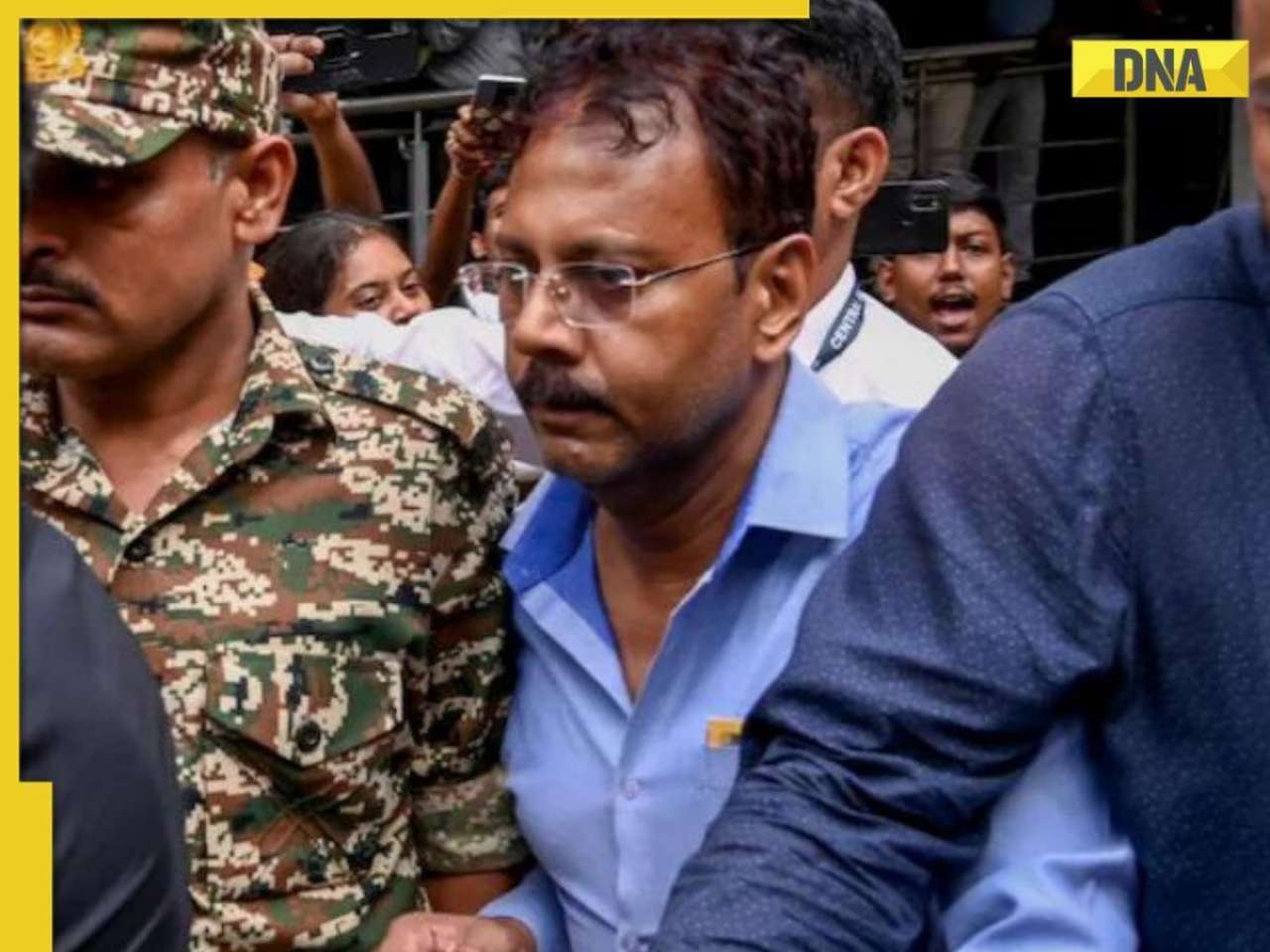




)
)
)
)
)
)
)
)
)
)
)
)
)
)
)

 4.750 km – Target for improving Dahisar river; work completed up to 4.150 km at
4.750 km – Target for improving Dahisar river; work completed up to 4.150 km at 




)
)
)
)
)
)